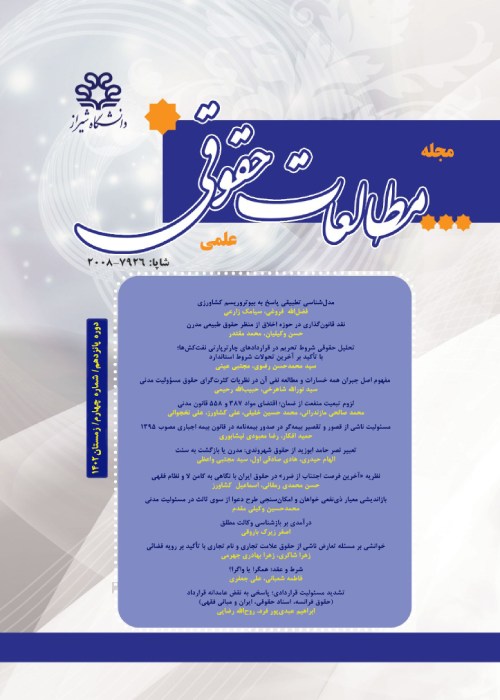Countering Agricultural Terrorism and its Prevention
Despite the pivotal role of agricultural development in combatting hunger and achieving food security, limited attention has been directed towards the repercussions of terrorism on agriculture. Nevertheless, empirical evidence does suggest that conflicts detrimentally impact agricultural inputs and outputs, including land, production, and income. In light of this, indicators of terrorism such as domestic, transnational, and unspecified terrorism, total terrorism, number of attacks, and fatalities due to terrorism can be correlated with agricultural indicators encompassing inputs (e.g., agricultural land and labor force) and outputs (e.g., agricultural productivity growth). Agricultural terrorism falls under the category of bio-terrorist crimes, with its primary consequence being the disruption of the agricultural sector. This includes actions such as livestock slaughter, vegetation pollution, and resource supply disturbance. Deliberately introducing animal or plant diseases to evoke terror, inflict economic harm, and destabilize targeted countries characterizes agricultural terrorism. This form of terrorism may be perpetrated by governments or independent terrorist organizations, sometimes acting on behalf of specific governments. Broadly defined, agricultural terrorism involves the deliberate introduction of animal or plant diseases to incite terror, inflict economic damage, and disrupt a nation's stability. Historical precedence reveals terrorist attacks targeting agriculture, orchestrated either by governments or independent terrorist groups linked to specific governments. The aftermath of biological attacks on agriculture can encompass severe economic crises in the agricultural and food industries, erosion of government trust, and even human casualties. If the chosen disease proves transmissible to humans, both food security and public health face peril. In armed conflicts, various methods of war result in the destruction of crops, displacement of agricultural populations, eradication of agricultural fields, and hindrance of humanitarian aid reaching vulnerable populations. Such actions infringe on the "right to food," a quintessential human right. Observing the principles and regulations of international human rights law can help mitigate armed conflicts' effects on agricultural security. International law unequivocally bans the exploitation of civilian starvation as a method of war. Imposed famines, as seen in countries like Syria, Tigray, Yemen, and now Ukraine, are not only a grim reality but also qualify as war crimes. Consequently, the International Criminal Court bears the responsibility, as per Article 8 of its Statute, to investigate and prosecute deliberate starvation as a war crime. Notably, the provision criminalizing intentional starvation in non-international armed conflicts was amended just a year after the adoption of UN Security Council Resolution 2417. The Assembly of States Parties to the International Criminal Court addressed this deficiency in the Rome Statute by including war crimes related to non-international armed conflicts. While comprehensive international measures against such terrorist crimes are yet to be sanctioned through the United Nations, the international criminalization of agricultural terrorism holds potential. Given its inhumane nature, expanding the court's jurisdiction in line with the provisions of Articles 5, 6, and 7 of the statute could impede its proliferation to some extent. The utilization of rural law enforcement agencies in countering and preventing terrorist acts against agricultural products is an undeniable necessity. Threats arising from various forms of terrorist crimes, including those targeting agriculture and the environment, necessitate continuous monitoring to avert destruction and insecurity. Additionally, domestic educational and research institutions possess considerable capability in tackling agricultural and environmental terrorism. By dedicating specific training centers to instruct officials and law enforcement officers in proper responses and preventive measures, this system can play a pivotal role. Prominent organizations like the American Academy of Sciences are establishing high-level national security centers to train university elites and scholars to address challenges posed by agricultural terrorist crimes, enhancing biological security and safeguarding food sources. Farmers should adopt measures such as permanent marking of farm and livestock equipment, minimizing predictable absences, and promptly reporting missing equipment to law enforcement. Incorporating investigation and prevention of terrorist acts against agricultural products into police curriculum and textbooks is crucial. Regional and national information resources related to agricultural terrorism should be developed and shared with law enforcement agencies. Additionally, research should address questions concerning the extent and types of agricultural terrorism and explore existing and potential preventive measures. As demonstrated, considering the territorial scope and outcomes of committed actions within the context of crimes under the jurisdiction of the International Criminal Court's Statute, with government consensus and collaboration, criminalizing agricultural terrorism is feasible. Inclusion within the statute's ambit covers terrorist crimes, facilitating the implementation of provisions for criminal pursuit and justice. Although political alignments during terrorist acts pose challenges to pursuing and prosecuting them in the International Criminal Court, a shared approach and cooperation among governments offer avenues for combating such crimes. On the non-criminal front, adopting preventive policies involves establishing technical, technological, and even social frameworks. Implementation of these measures ensures that the offensive and defensive ambiance stemming from terrorist acts remains subject to control, supervision, and management.
- حق عضویت دریافتی صرف حمایت از نشریات عضو و نگهداری، تکمیل و توسعه مگیران میشود.
- پرداخت حق اشتراک و دانلود مقالات اجازه بازنشر آن در سایر رسانههای چاپی و دیجیتال را به کاربر نمیدهد.


